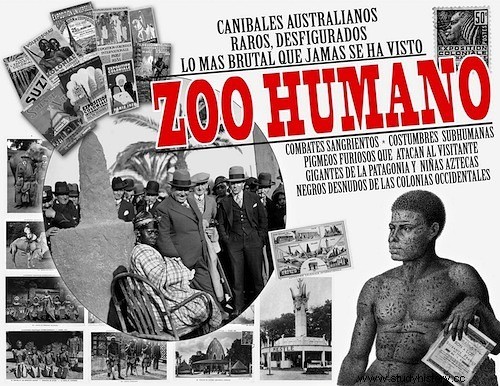Sunday again. Meals with the family, morning walks, complaints about how close Monday is again... What do we do? Shall we watch a movie? Or go out for coffee?
Surely this is the typical Sunday that many of us practice week after week in Spain today. However, throughout the ages and different places, these customs have varied. In Madrid, for example, something very recurrent is going for a walk through the famous Parque del Retiro. Walking around the Crystal Palace, the statue of the Fallen Angel or the pond with the statue of Alfonso XII is something that we can enjoy now and at the end of the 19th century, when the park also housed a human zoo.

The posters that advertised it and the show itself would leave us perplexed today, but at the time they were the great tourist attraction of the city. Filipino Indians, Negritos, Tagalogs, Moors from Jolo, Carolinians...there were many "species" that the German Carl Hagenbeck He moved all over Europe to expose them like authentic beasts inside cages and in view of everyone who wanted to enjoy the show. It is said that in Madrid they were able to visit the Royal Palace and meet the Queen Regent María Cristina de Habsburgo (mother of Alfonso XIII).
If we go to Paris, in addition to being able to enjoy the aforementioned human zoos, stroll along the infinite boulevards, enjoy the operas and have coffee at the Parisian gatherings, a very widespread entertainment among the Parisian bourgeoisie was the visit to the morgue .

Those in charge of the deposit used to expose the bodies in public to proceed with their recognition, something that given the high number of people who approached it was practically certain that it would happen. However, people did not crowd around the windows to do a common good, but rather it was morbidity that made those crowds get in front of the naked or mutilated bodies of the corpses.
And in London they also had their own show... Formerly, madness was identified with supernatural evils, typical of demonic possession or divine punishment for sins committed. Later it began to be identified as the loss of reason whose only remedy was confinement and the savage experiments, more typical of torture, to which the sick were subjected. In the 14th century, what had been an Order of the Star of Bethlehem convent in London became Bethlem Royal Hospital , also called Bedlam , and was the first to welcome patients with mental illness. Unfortunately, the hospital did not become famous for being a pioneer in treating mental illness but for the brutal mistreatment of patients (those considered violent or dangerous were tied and chained). In fact, the term Bedlam It has become synonymous with chaos, confusion, uproar...

And to add insult to injury, during the 18th and part of the 19th century, Bedlam became a tourist attraction. For the modest price of a penny - the first Tuesday of every month was free - you could watch the spectacle put on by the poor lunatics. In addition, if the show that day had not met expectations, sticks could be brought to incite the insane and raise the level of the show. Some also gave them alcohol to see how they would act drunk. In 1814 more than 96,000 visits were recorded, the biggest show in London.
The 19th century was a century of great and favorable changes, although at that time, which was beginning to be so advanced, customs worthy of our most primitive and even dehumanized instincts still persisted within us.
